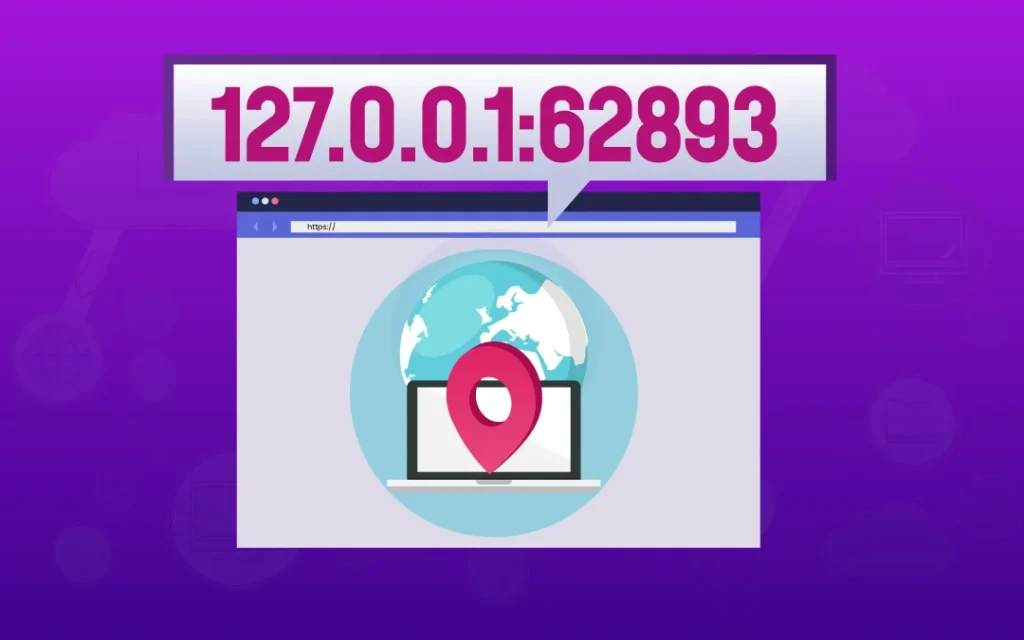In the field of networking, you often deal with multiple servers, port numbers, and web pages. In this, 127.0.0.1 is often referred to as “localhost.” It represents the loopback address of your own machine. It allows computers to send network requests to themselves for testing purposes.
However, when appended with a port number, such as 62893, things get a bit more specific. Let us discuss what 127.0.0.1:62893 is and how to troubleshoot and resolve issues that arise when dealing with it.
127.0.0.1:62893? What is it?
127.0.0.1 is a special IP address reserved by the Internet Engineering Task Force (IETF) for loopback functionality. This means computers use it internally to communicate with themselves. It doesn’t interact with external networks or the internet. This is ideal for testing network services without sending data outside the system.
127.0.0.1:62893 includes a port number, in this case, 62893. Ports are like gateways that help the operating system distinguish between different services running on the machine. For example, port 80 is for HTTP traffic, while 62893 could be randomly assigned for a specific local service. Typically, applications assign themselves random ports in higher ranges to avoid conflicts with standard services.
Why You May Encounter 127.0.0.1:62893
You may come across 127.0.0.1:62893 when running specific software or development environments that use your machine as a server for local testing. Here are some common scenarios:
Development Tools
Localhost is frequently used by developers running web servers or APIs on their own machines. Port number 62893 might be generated by a web server or application like Node.js or Python Flask, which serves content to test within your local environment.
Application Errors
Sometimes, this address is displayed when an error occurs while accessing locally hosted applications. For example, a web app you are building might fail to bind to a certain port, causing an error when attempting to access 127.0.0.1:62893.
Blocked Services
Firewalls, antivirus programs, or incorrect configurations can block communication to a specific port. It might cause issues when interacting with services tied to 127.0.0.1.
How to Troubleshoot Issues with 127.0.0.1:62893?
If you encounter problems accessing or interacting with 127.0.0.1:62893, several troubleshooting steps can help resolve the issue.
Check if the Service is Running
A primary reason for the failure in connecting to 127.0.0.1:62893 is that the service linked to this port isn’t running. To verify, you can use the following steps depending on your operating system:
On Windows: Use the command prompt to check open ports. Run `netstat -an | find “62893”` to see if anything is actively using that port.
On macOS/Linux: You can use `lsof -i :62893` or `netstat -an | grep 62893` to check if the service runs on this port.
If no results are shown, ensure the application that is supposed to use this port is correctly configured and running.
Port Conflict
Port conflicts can arise when multiple services attempt to use the same port number. In such cases, you might receive a message indicating that the port is already in use.
To resolve this:
Stop the conflicting service that’s using port 62893. Alternatively, configure your application to use a different port. You can do this by adjusting the configuration settings of the application in question.
Check Your Firewall and Security Settings
Firewalls on your local machine and network level might block connections to certain ports, including 62893. To check and fix this:
On Windows: Go to the Control Panel and search “Windows Defender Firewall.” From there, create a rule to allow connections on port 62893.
On macOS/Linux: Use `sudo ufw allow 62893` on Linux or go to macOS Security Preferences to ensure no blocking occurs on that port.
Optimizing Your Environment
Once you resolve connectivity issues, ensuring smooth operation in the future is essential. Here are some best practices:
- Use dynamic port assignment during development to avoid conflicts. Tools like Docker can help manage environments, ensuring each service has its unique port range.
- Enabling detailed logging on your server or service can help you catch problems before they cause access issues.
- Implement automated tests within your development pipeline to ensure your local environment behaves as expected.
Final words
Addressing issues with 127.0.0.1:62893 may seem daunting initially. But once you understand the basics of localhost and port management, troubleshooting becomes easier. Start by verifying that the service tied to the port is running. With the above-mentioned steps, you can manage localhost environments like a pro!

